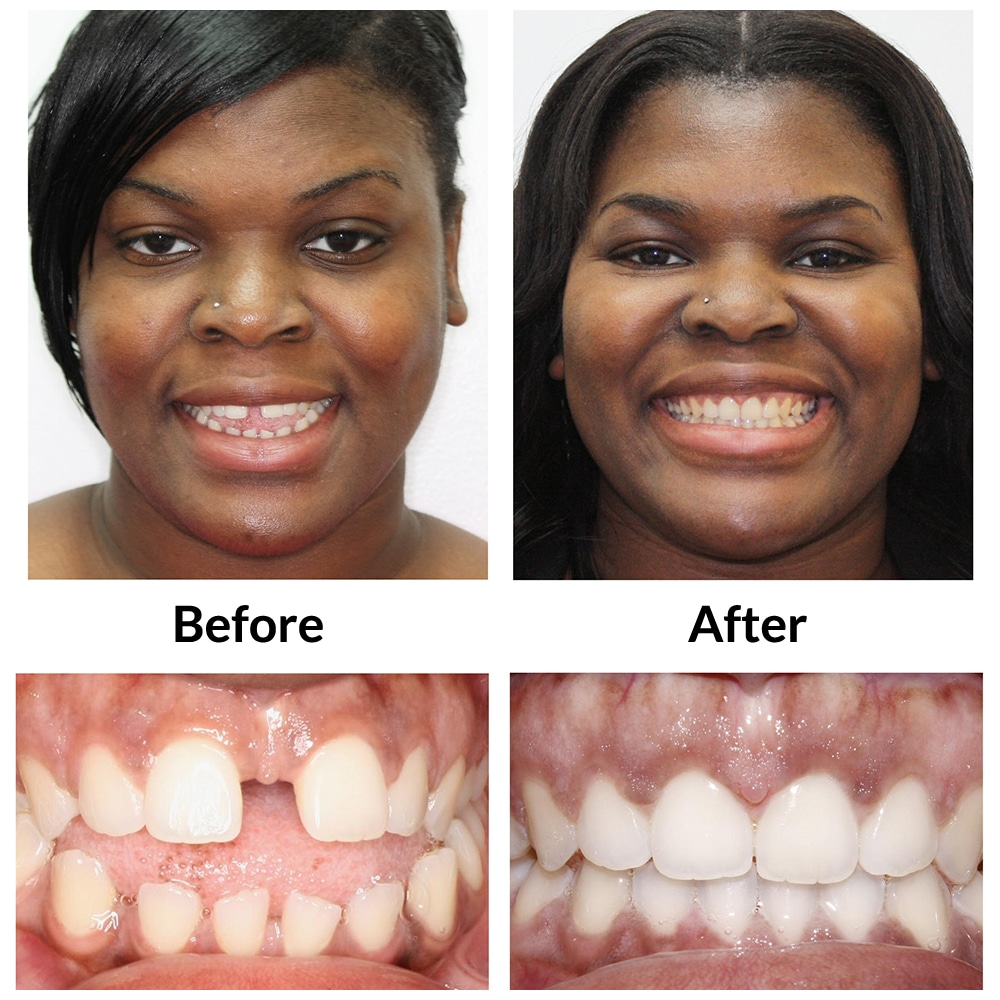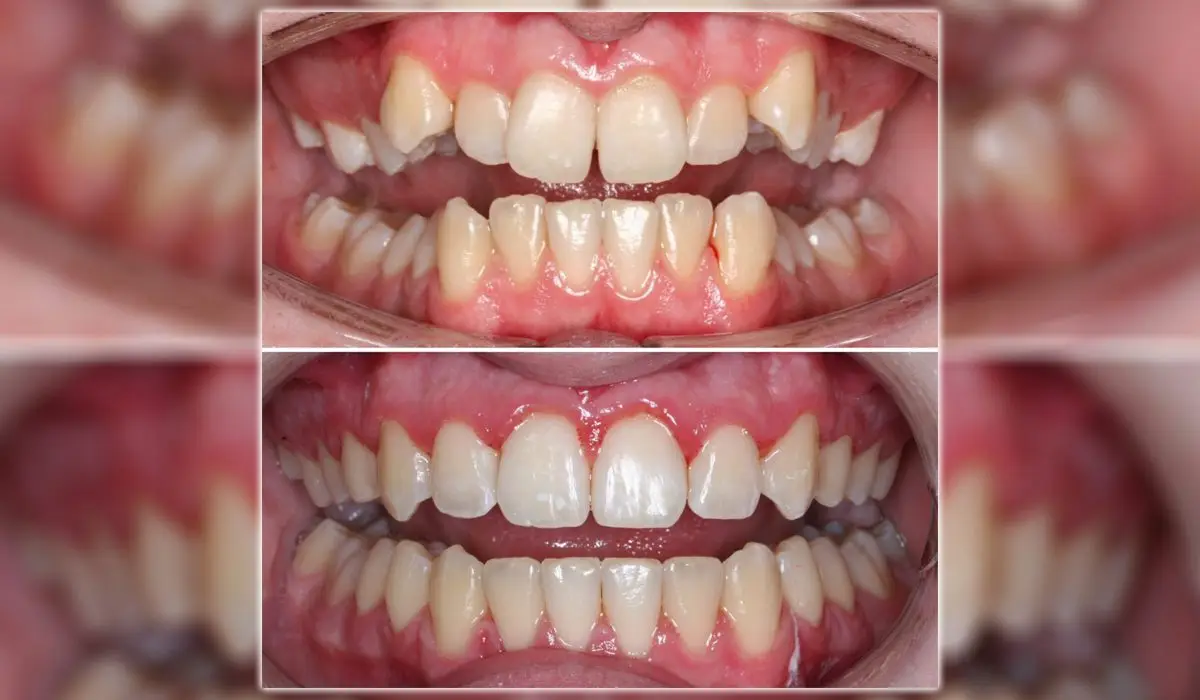Invisalign vs. Typical Braces: Which Option Is Right for You?
When taking into consideration orthodontic treatment, the option in between Invisalign and typical dental braces presents several essential aspects that merit careful analysis. Invisalign provides a discreet option with removable aligners, while typical dental braces give an extra visible yet effective remedy for extreme imbalance. Each alternative incorporates distinctive benefits and disadvantages associated with appearances, convenience, therapy period, and price. Comprehending these nuances is vital for making a notified decision that aligns with your individual preferences and lifestyle. The concern remains: which alternative will best meet your orthodontic requirements and expectations?
Introduction of Treatment Alternatives

In comparison, typical dental braces are composed of metal braces and wires that are bound to the teeth. This method applies continuous pressure over time to attain positioning. While reliable for complicated orthodontic concerns, typical dental braces call for regular gos to for changes and can pose challenges in keeping dental hygiene because of the trouble of cleaning about braces and wires.
Both choices have their qualities, and the selection frequently depends upon details oral problems, way of life choices, and person compliance. Eventually, seeking advice from an orthodontic specialist is critical for identifying the most suitable treatment strategy tailored to individual needs. Recognizing the subtleties of each alternative can considerably affect the general success of orthodontic therapy.
Aesthetic Considerations
A significant variable affecting the option between Invisalign and typical braces is the aesthetic allure each therapy uses. Invisalign aligners are crafted from clear plastic, making them practically undetectable when worn.
On the other hand, conventional dental braces include metal brackets and cables, which can be extra recognizable. While innovations in orthodontic innovation have actually caused the advancement of smaller sized braces and tinted elastics, typical braces still maintain a more conspicuous account. For some people, the presence of dental braces may prevent them from looking for required treatment.
Ultimately, the option between Invisalign and traditional dental braces may depend upon personal preferences concerning looks. Clients that prioritize discretion commonly lean towards Invisalign, while those who are much less concerned concerning visibility may choose conventional dental braces. Comprehending the visual effects of each choice is vital for making a notified decision that lines up with one's lifestyle and preferences.
Convenience and Convenience

In terms of comfort, Invisalign aligners are removable, enabling clients to appreciate their favorite foods without limitation and maintain ideal oral hygiene. Brushing and flossing are streamlined, as the aligners can be secured throughout these regimens, whereas standard braces call for cautious navigating around braces and wires.
In addition, Invisalign's modern system permits less orthodontic gos to. Individuals generally get several sets of aligners at once, which can streamline the treatment process and minimize time invested in the orthodontist's chair. In comparison, conventional dental braces necessitate regular modifications, making them much less hassle-free for those with active routines. Invisalign. Generally, the convenience and comfort of Invisalign make it an enticing option for many people looking for orthodontic treatment.
Therapy Period and Performance
While both Invisalign and traditional braces work in fixing oral imbalances, the duration of therapy can differ considerably between the 2 choices. Generally, Invisalign treatment can take anywhere from 12 to 18 months, relying on the complexity of the case. The clear aligners work by slowly shifting teeth right into their preferred placements, and normal follow-ups with an orthodontist help ensure development continues to be on track.
In comparison, traditional dental braces often need a longer dedication, generally varying from 18 months to three years. This is due to their fixed nature and making use of wires and brackets, which can be much more effective for extreme misalignments and intricate instances (Invisalign). The therapy efficiency of standard braces is well-documented, as they permit exact modifications and higher control over tooth motion
Inevitably, the selection in between Invisalign and typical dental braces may rest on both the expected therapy period and the certain oral concerns at hand. Consulting with an orthodontist is vital, as they can offer customized recommendations based upon specific demands, ensuring the picked technique lines up with preferred timeframes and results.
Price Contrast and Insurance Coverage Alternatives
Expense plays a significant function in the decision-making procedure for individuals thinking about orthodontic treatment, whether choosing Invisalign or conventional dental braces. Typically, the expense of Invisalign varieties from $3,000 to $8,000, while standard braces generally set you back between $2,000 and $6,000. Variables affecting these expenses consist of the intricacy of the case, the period of therapy, and geographical place.
Several dental insurance plans provide partial coverage for orthodontic therapies, however the specifics can differ widely. Generally, her explanation traditional braces may be much more frequently covered by insurance policy strategies contrasted to Invisalign, which some insurance firms categorize as a cosmetic procedure.
Furthermore, several orthodontic techniques supply adaptable layaway plan, making both treatment alternatives more easily accessible. Patients should ask about possible financing choices and discount rates for in advance settlements. Reviewing the total expense, consisting of insurance advantages and layaway plan, is necessary for making a notified choice that aligns with both aesthetic preferences and spending plan factors to consider.

Verdict
In summary, the selection in between Invisalign and standard braces pivots on multiple elements, consisting of visual choices, comfort, therapy period, and price. Invisalign supplies a discreet, removable alternative that facilitates dental health and dietary adaptability, while typical braces might be better for intricate oral problems and commonly come with a reduced cost point. Inevitably, appointment with an orthodontist is necessary to evaluate individual scenarios and establish one of the most appropriate therapy option for achieving ideal oral positioning.
When considering orthodontic treatment, the choice in between Invisalign and conventional braces provides a number of important variables that merit cautious assessment.Contrasting Invisalign and traditional braces reveals distinctive therapy choices for orthodontic modification.While both Invisalign and conventional braces are reliable in remedying oral imbalances, the duration of treatment can differ considerably between the two alternatives.Cost plays a considerable role in the decision-making procedure for individuals taking into consideration orthodontic treatment, whether deciding for Invisalign or typical dental braces.In summary, the choice in between Invisalign and visit this web-site standard dental braces hinges on numerous factors, consisting of visual choices, comfort, therapy period, you can try here and price.